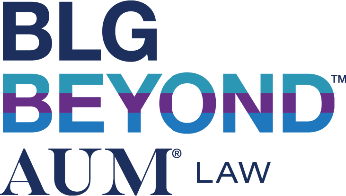Identifying OAs: Regulators have been busy with the implementation of the client focused reforms (CFRs) and the recent amendments to National Instrument 33-109 Registration Information (NI 33-109) and National Instrument 31-103 Registration Requirements, Exemptions and Ongoing Registrant Obligations (NI 31-103). As a result, many registered firms have been inundated trying to navigate these changes.
Recently, BLG and AUM issued an article summarizing some of the key amendments and their impact on registrants, including the introduction of five new categories of reportable outside activity (OA), which replaces the prior concept of an OBA. All OAs must be formally assessed – first to determine if an OA qualifies as one of the five reportable OA categories – and the OA must be approved (or denied) by the firm. If approved and reportable, the OA must be reported via the NRD. Firms are also expected to continue to monitor and supervise a registrant’s outside activities. Registrants should pay particular attention to the position of influence category (category #5) of an OA, because Section 13.4.3 of the Companion Policy to NI 31-103 indicates that firms must restrict the client base of a registrant whose OA is deemed to be a position of influence over said clients.
Regulators have provided guidance outlining what firms must implement (if not already in place), including an internal reporting system through which registrants can submit their OA requests for approval. Prior to approving (or denying) the OA, firms are expected to assess the information provided and determine whether:
- The activity impacts existing conflicts of interest, or the OA may create a potential material conflict of interest and/or potential client confusion; and
- The firm’s internal controls are sufficient to address a material conflict of interest in the best interest of the client and any other issues that could arise from an OA. If the firm does not have sufficient controls in place, then the OA should not be permitted.
Firms are required to disclose material conflicts of interest to clients before opening an account or at least in a timely manner after a material conflict is identified.
Training, Training, Training! The regulators expect firms to provide training and education sessions for employees on the new OA and conflicts of interest requirements. These sessions convey to employees what their obligations are and help demonstrate to regulators that there is an effective compliance system in effect at a firm.
A Few Other Items You May Have Missed: NI 33-109F1 is now called the Notice of End of Individual Registration or Permitted Individual Status – but why? The regulators want the final day an individual is authorized to work in a registered capacity on behalf of their (former) firm captured in the NRD. In the past, some firms used the last day a registrant was paid by the firm as their “termination” date, even though the person has no capacity to act on behalf of the firm as at a different date. The regulators want the cessation date to be the last day that a registrant is authorized to act on behalf of the firm or the last day on which an individual was a permitted individual of their sponsoring firm.
Standard of Conduct: NI 33-109 introduces this term, which requires firms to confirm for registrants leaving whether the firm or an affiliate investigated the individual relating to possible material violations of fiduciary duties, regulatory requirements or the compliance policies and procedures of the firm or an affiliate (e.g. engaging in undisclosed outside activities). NI 33-109F4 further requires a prospective registered individual to disclose all allegations that existed against the person at the time of their last resignation or termination, including any allegation of a failure to meet any standard of conduct of the sponsoring firm or professional body. The required internal reporting system, and updated policies and procedures (to include this language, as well as the aforementioned amendments) will be beneficial to firms as they operate under the new regime.
Updating the NRD: There are new questions and sections of the relevant registration forms to accommodate the amendments. Required updates to individual registration forms must be done by the earlier of (i) the deadline related to the change to the registration information and (ii) June 6, 2023. For anyone currently trying to update any of the forms, you may have noticed some of these changes, particularly if the previous response recorded in the NRD stated “there is no response to this question”. A response must now be provided to these questions to complete the filing. If it has been determined that a new OA creates a conflict that requires a change or update to previously reported responses to prior Item 6.2 Conflicts of Interest of Form 33-109F6, then the firm will have 30 days to report this change via the NRD.
Finally, titles and designations must be reported via the NRD. This requirement is complementary to new CFR rules which prohibit misleading business titles and designations. Your AUM contact would be happy to discuss any or all of these changes with you.
June 30, 2022
